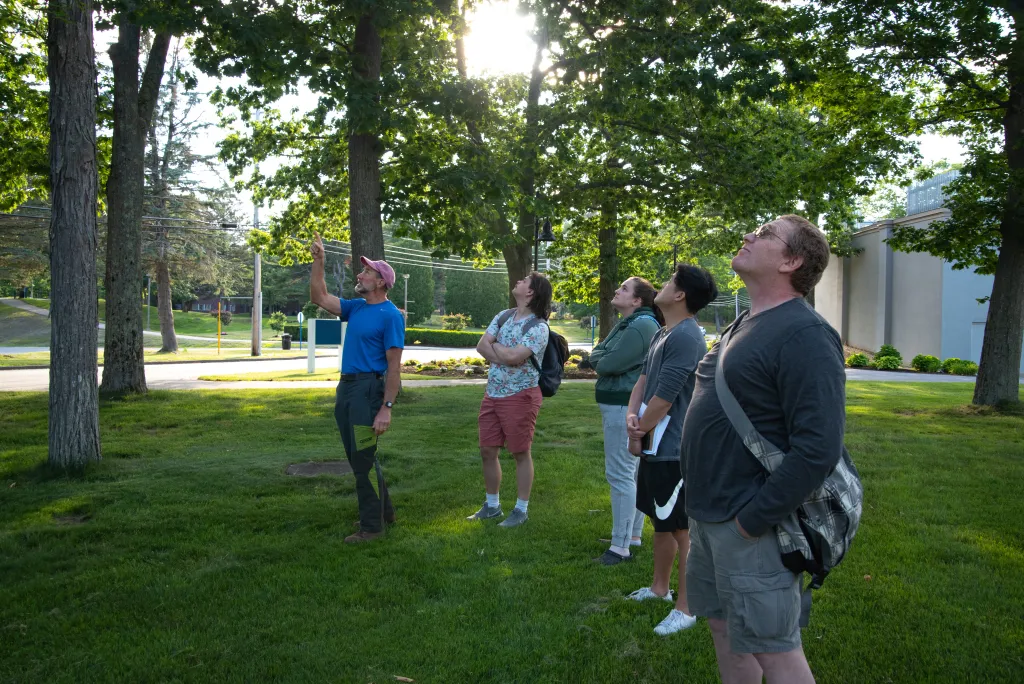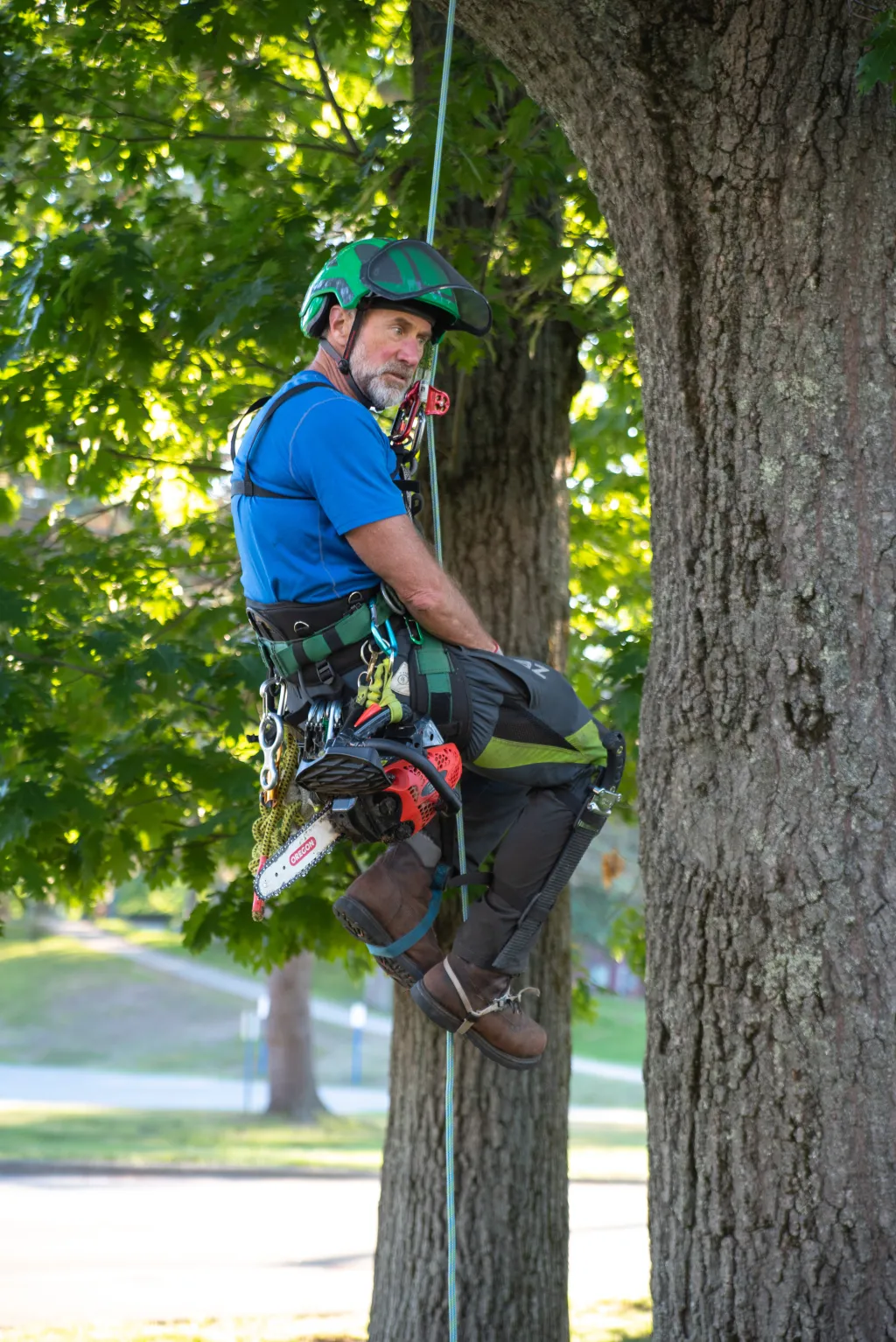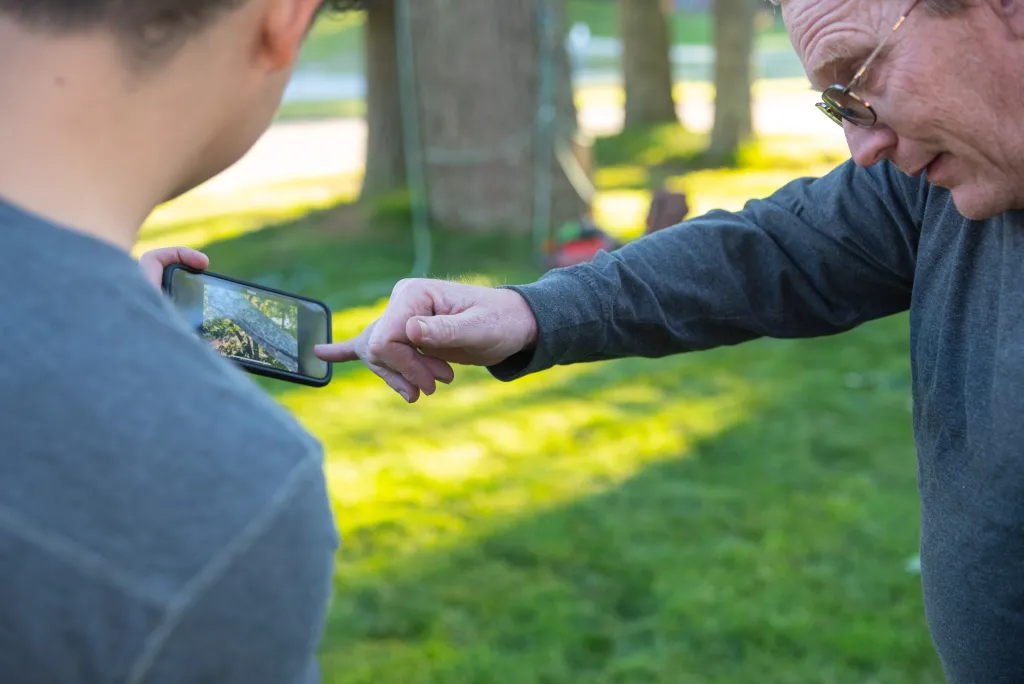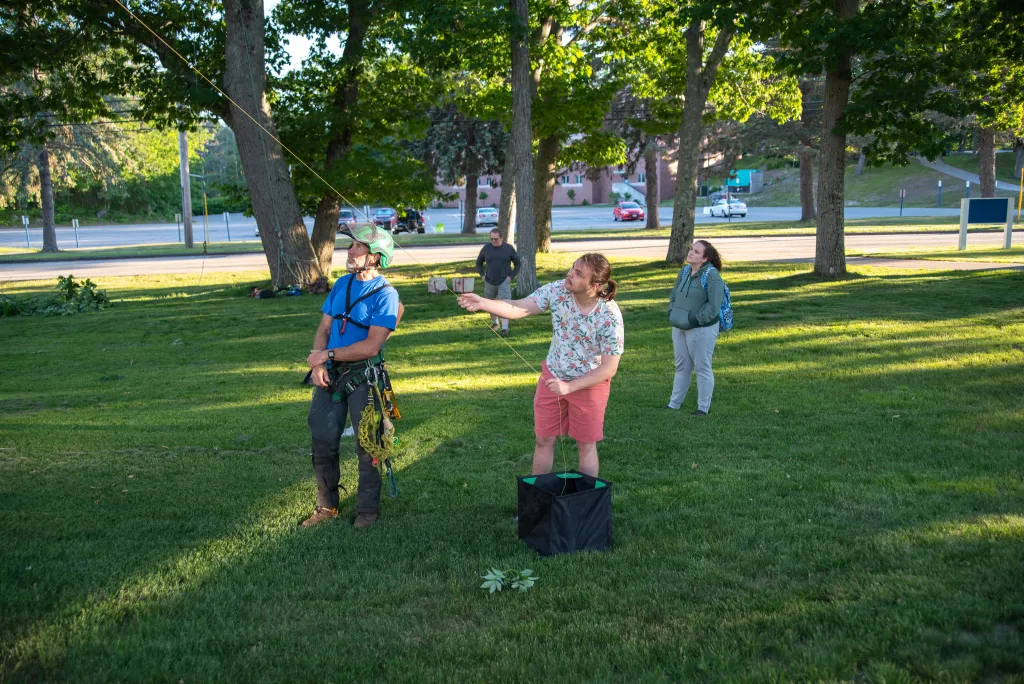New, hands-on course engages students in practice of urban forestry
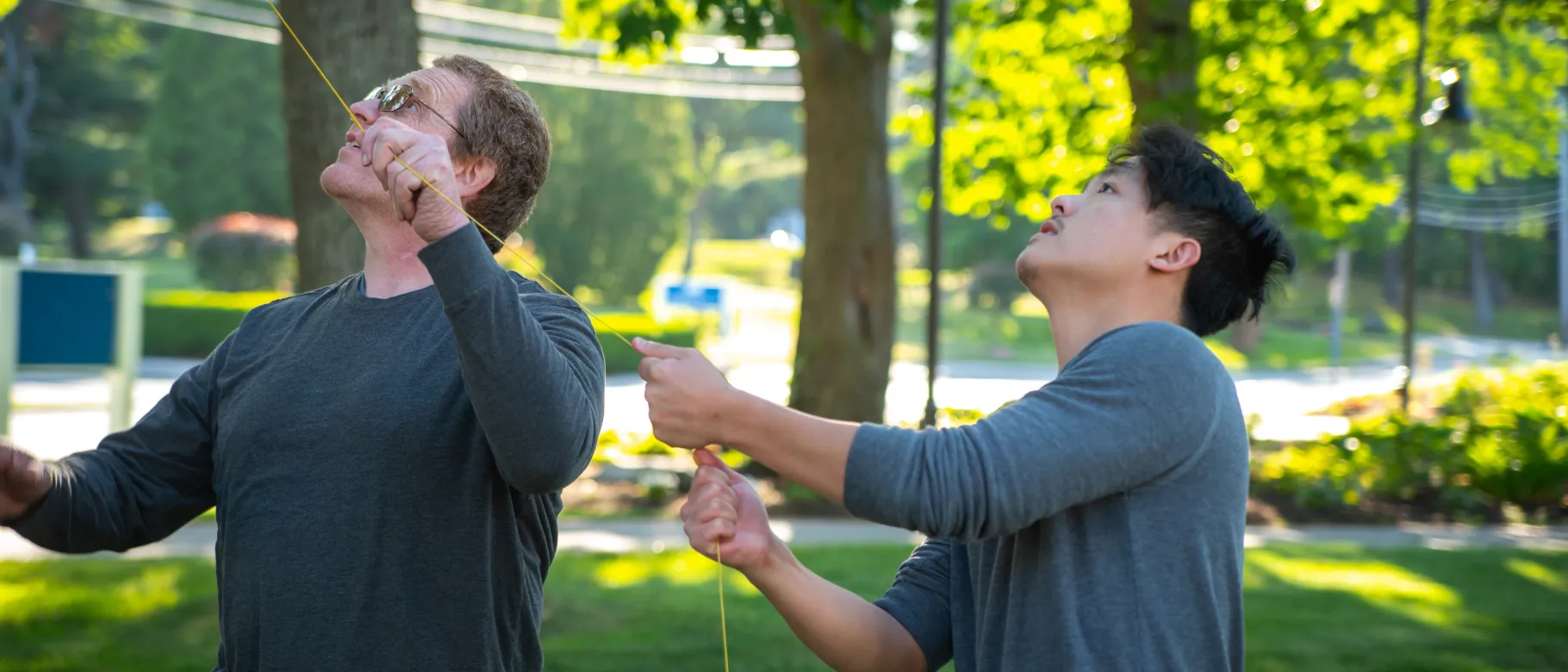
A new course at the University of New England has engaged students in the care and management of tree populations in urban settings, a concept known as urban forestry.
The course, which wrapped on June 24, introduced students to the urban forest as a social construct, environmental feature, and phenomenological experience. Through a combination of readings and field work experience, students explore the relationship between people and the urban forest from historical, psychological, sociological, legal, policy, environmental, and global perspectives.
Coursework involved identifying urban trees and learning how to measure and assess them; collecting social and arboricultural data; evaluating ways in which people interact with the urban forest; and working through the multi-faceted process of selecting and planting trees, among other hands-on tasks.
The course’s instructor, Michael Duddy, J.D., M.P.P.M., adjunct assistant teaching professor in the School of Social and Behavioral Sciences and School of Marine and Environmental Programs, said teaching urban forestry is important because of the influx of people moving to urban areas.
“Teaching urban forestry is important because more and more people are living in towns and cities, and urban greening is emerging as a key environmental goal,” said Duddy, a board-certified master arborist and a professional licensed forester.
The course, which had four inaugural students, is ideal for those who wish to become arborists, like Brian Brabant (Environmental Science, ’23).
“I learn the best and have the most fun when I’m outside,” Brabant remarked. “I’m already planning on taking the International Society of Arboriculture exam to become certified, and this class is preparing me for that.”
Another student, Terry Sun (Environmental Science, ’22), said the hands-on nature of the course was one of the reasons why he changed his major from sport and recreation management to environmental science.
“It doesn’t get any better than this,” he said during one outdoor recent class, in which Duddy demonstrated proper tree climbing techniques for arboricultural purposes. In other classes, students have inventoried trees in Portland's Lincoln Park and pruned trees at Gull Crest Park in Cape Elizabeth. Students also participated in daylong field trip to the Arnold Arboretum just outside Boston.
“This experience will stick with me well after the course ends,” Sun added.
The course is one of several that will benefit from a $23,000 Project Canopy Assistance Grant awarded to the School of Marine and Environmental Programs from the state Department of Agriculture, Conservation, and Forestry’s Maine Forest Service. The grant will go toward funding the creation of a digital inventory of trees on both UNE’s Biddeford and Portland campuses.
The project’s goals are to collect the tree data necessary for UNE to develop a comprehensive sustainability and management arboricultural plan for its two campuses. The grant award will support the University’s broader goals of using the inventory as an important teaching asset for courses such as urban forestry.
"Urban forestry lies at the heart of the global urban greening movement,” said Duddy. “The new course offering, the ability to hire and train urban forestry interns, and the tree inventory itself will all help provide UNE students with globally important skills and education.”
